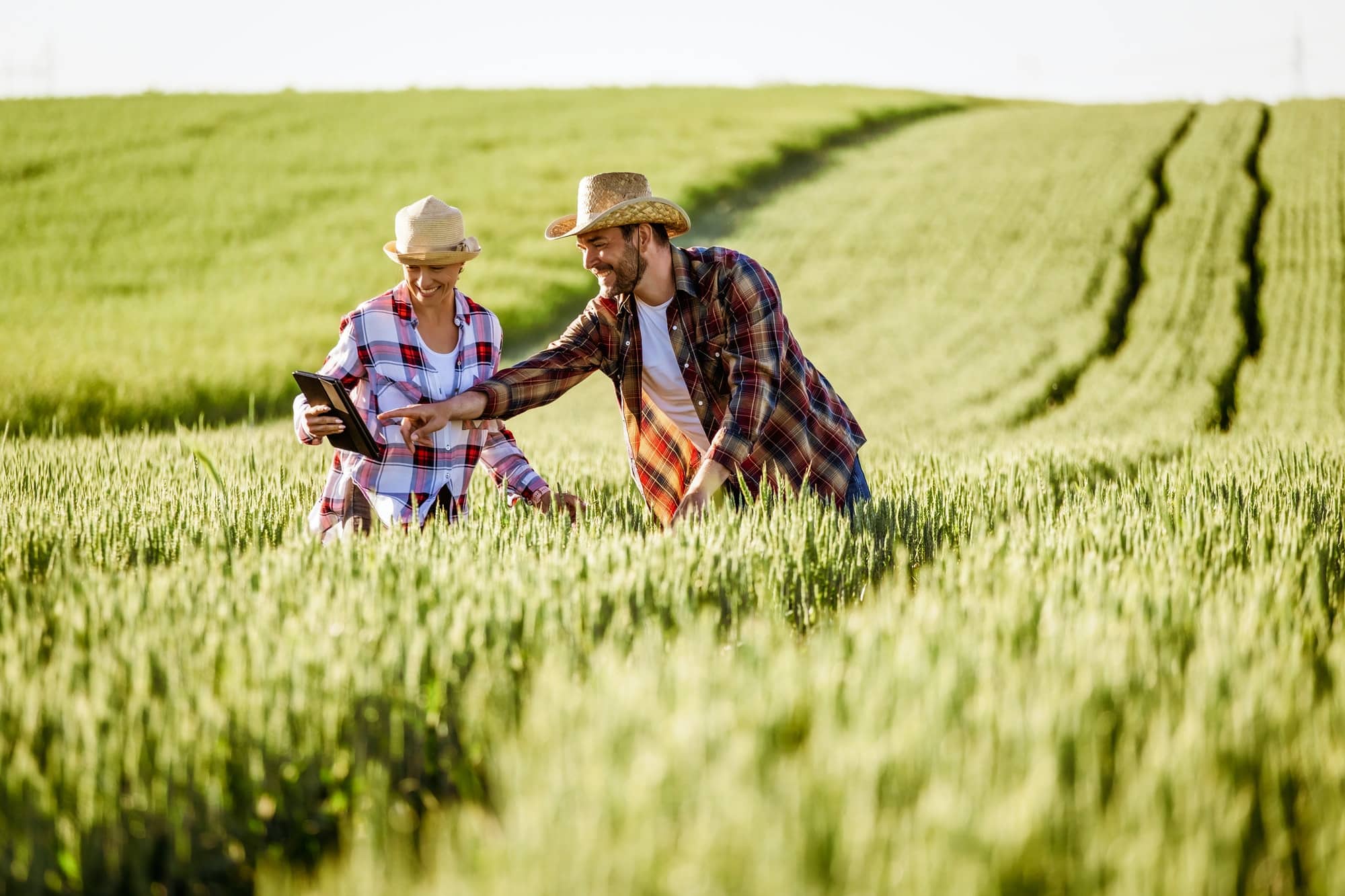Can AI-Powered Crop Surveillance Drones Increase Farm Yield and Efficiency?

In the world of agriculture, the advent of technology has brought a paradigm shift in the way farming is carried out. The traditional methods of exhaustive labor-intensive practices have gradually given way to precision agriculture powered by data-driven technology. At the forefront of this transformation are crop surveillance drones. These unmanned aerial vehicles (UAVs) equipped with advanced AI technology are playing a pivotal role in revolutionizing how farmers manage their farms and crops. The potential of these drones in increasing farm yield and efficiency, as well as the way they are shaping the future of agriculture, is the focus of this article.
The Role of Drones in Precision Agriculture
Precision agriculture is a modern farming practice that uses data from various sources, like weather predictions, soil health and crop health data, to optimize crop yields and reduce waste. Drones are playing a central role in precision agriculture by providing accurate and timely data to farmers.
Lire également : What’s the Impact of Automated Electric Vehicle Charging Stations on Urban Mobility?
Drones, or UAVs, are capable of flying over farmlands, capturing data with their onboard sensors and cameras. This data includes information about soil health, crop health, and potential issues that might affect crop yields, like pest infestations or water shortages. These drones can cover large areas of farmland in a short period of time, making them an efficient tool for farmers.
Once the data is collected by the drones, the raw information is processed using AI technology. The AI can analyze the data, identify patterns, and provide actionable insights to the farmers. For instance, if the AI detects signs of disease in certain parts of the crop, the farmer can apply targeted treatment to those areas, preventing the spread of the disease and saving the majority of the crop.
A lire aussi : 10 tips for generating more realistic images with MyImageGPT
Benefits of Using Drones for Crop Surveillance
The use of drones for crop surveillance brings numerous benefits to the table. These include enhanced crop health management, optimized irrigation techniques, and the potential for increased yields.
One key advantage of drones is their ability to monitor crop health in real-time. Diseases and pests can significantly decrease crop yields if not detected and dealt with promptly. A drone, with its advanced sensors, can detect signs of distress in crops well before they become visible to the naked eye. This gives farmers the chance to address issues swiftly, preventing widespread damage and safeguarding yields.
On the irrigation front, drones can map out the topography of the farmland and collect data on soil moisture levels. AI-powered analysis of this data can help establish the optimal irrigation plan, ensuring that water is used efficiently. This is particularly beneficial in areas where water is a scarce resource.
The Impact of Drone Technology on Farm Management
The introduction of drone technology is not just making farms more efficient, but it is also transforming how farms are managed. Farms are no longer solely dependent on human labor and traditional farming methods. Instead, data-driven technology is now an essential part of farm management.
With drones, farmers can monitor their crops and farmland remotely, saving time and reducing the need for physical checks. This allows for better time management and the ability to focus on other important aspects of farming. Additionally, the abundance of data collected by drones allows for more informed decision-making, leading to improved farm management practices.
Furthermore, predictions from AI-powered analysis help farmers plan for potential problems, such as weather events or pest invasions, well in advance. This foresight allows farmers to take preventive measures, thereby minimizing potential losses and ensuring consistent yields.
Unlocking the Future of Agriculture with Drones
Looking ahead, drones have the potential to revolutionize the agricultural sector further, paving the way for a future where farms are more productive, efficient, and sustainable.
One possibility is the use of drones for precision application of pesticides and fertilizers. Instead of blanket-spraying these substances over the entire crop, drones could apply them only where needed, based on the data collected. This would reduce the environmental impact of farming, cut costs, and increase yields.
Technological advancements could also lead to drones being capable of carrying out farming tasks autonomously. This includes tasks like planting seeds, watering crops, and harvesting. Such a future would significantly reduce the human labor required in farming, making the industry more efficient and sustainable.
While there are challenges to overcome, such as regulatory concerns and the need for advanced AI capabilities, the potential of drones in agriculture is undeniable. As the technology continues to evolve, it’s clear that drones will play a key role in shaping the future of farming.
Utilizing AI and Machine Learning for Crop Analysis
Harnessing the power of artificial intelligence (AI) and machine learning, drones are becoming increasingly sophisticated in their crop monitoring capabilities. The complex algorithms that drive these technologies enable drones to not only gather high-resolution imagery but also interpret it in meaningful ways.
The on-board cameras and sensors on these drones can take detailed images of the crops, allowing for a close examination of plant health in real time. The drones’ computer vision capabilities can identify nuances like variations in leaf color or texture that might indicate a disease or nutrient deficiency.
Machine learning algorithms are then used to analyze the collected data, recognizing patterns and anomalies. The AI can then use this information to predict future trends, such as the likelihood of a pest attack or the impact of climate change on the crop yield.
For instance, if the machine learning models detect signs of a particular pest in the imagery, they can alert farmers to take targeted action, minimizing crop damage. Similarly, AI can forecast weather changes and alert farmers to adjust their irrigation or harvesting schedules accordingly.
This level of predictive analysis and real-time decision making can significantly improve farming practices, making them more responsive and efficient. However, for smallholder farmers to fully leverage this technology, there is a need for accessible training and support on using drones and interpreting the data generated.
The Potential Impact on Agricultural Sustainability
Beyond optimizing crop yields and farm efficiency, drone technology has the potential to address one of the biggest challenges facing the agriculture sector – sustainability. As the world grapples with the effects of climate change, there is an increasing need for farming practices that are environmentally friendly.
The precision farming capabilities of drones have a significant role to play in this regard. For instance, drones can ensure that water, fertilizers, and pesticides are applied in the precise quantity and location required, minimizing wastage and reducing the environmental impact.
By providing accurate data on soil health and moisture levels, drones can help develop efficient irrigation strategies that conserve water. Furthermore, the use of drones for targeted application of fertilizers and pesticides can reduce the overall quantities used, decreasing the pollution of water bodies and soil.
In addition, drones can enable regular and comprehensive monitoring of farmland. This can help detect and address issues like soil erosion or degradation early on, promoting the long-term health and productivity of the land.
By making agriculture more data-driven, drones are facilitating the shift towards more sustainable farming practices.
Conclusion
The integration of AI-powered crop surveillance drones into agriculture is no longer a matter of the future, but rather, a current reality. As this technology continues to evolve, it promises to redefine the landscape of farming practices, making them more efficient, effective, and sustainable.
From real-time crop health monitoring to high-resolution data collection, precision farming to sustainable practices, drones are poised to revolutionize agriculture. However, it is essential to address regulatory concerns, improve AI capabilities, and ensure that smallholder farmers have access to this technology.
While challenges remain, the potential benefits of drone technology in agriculture are immense. As we adapt and evolve, drones may well become an indispensable tool in the fight against global food insecurity and climate change.
